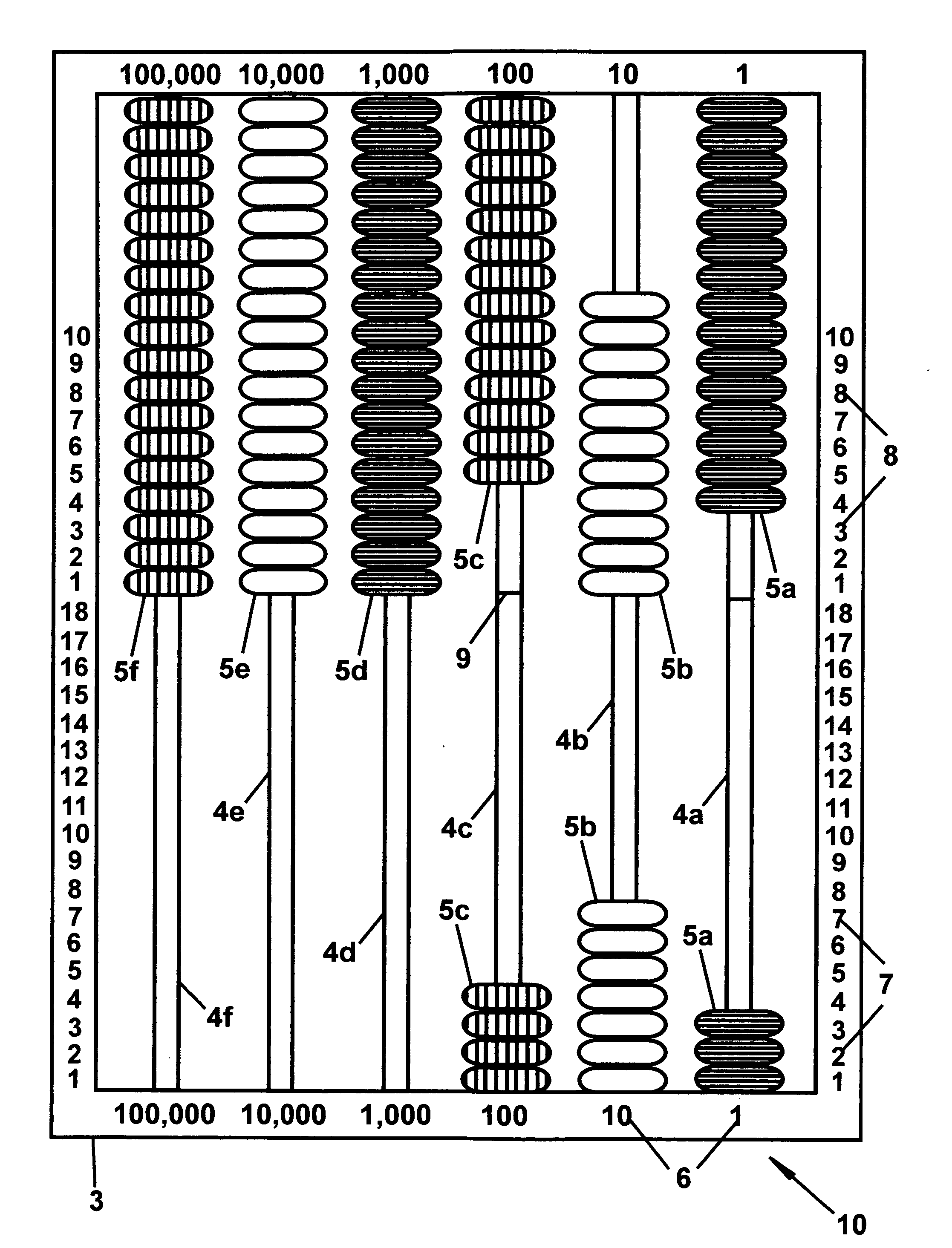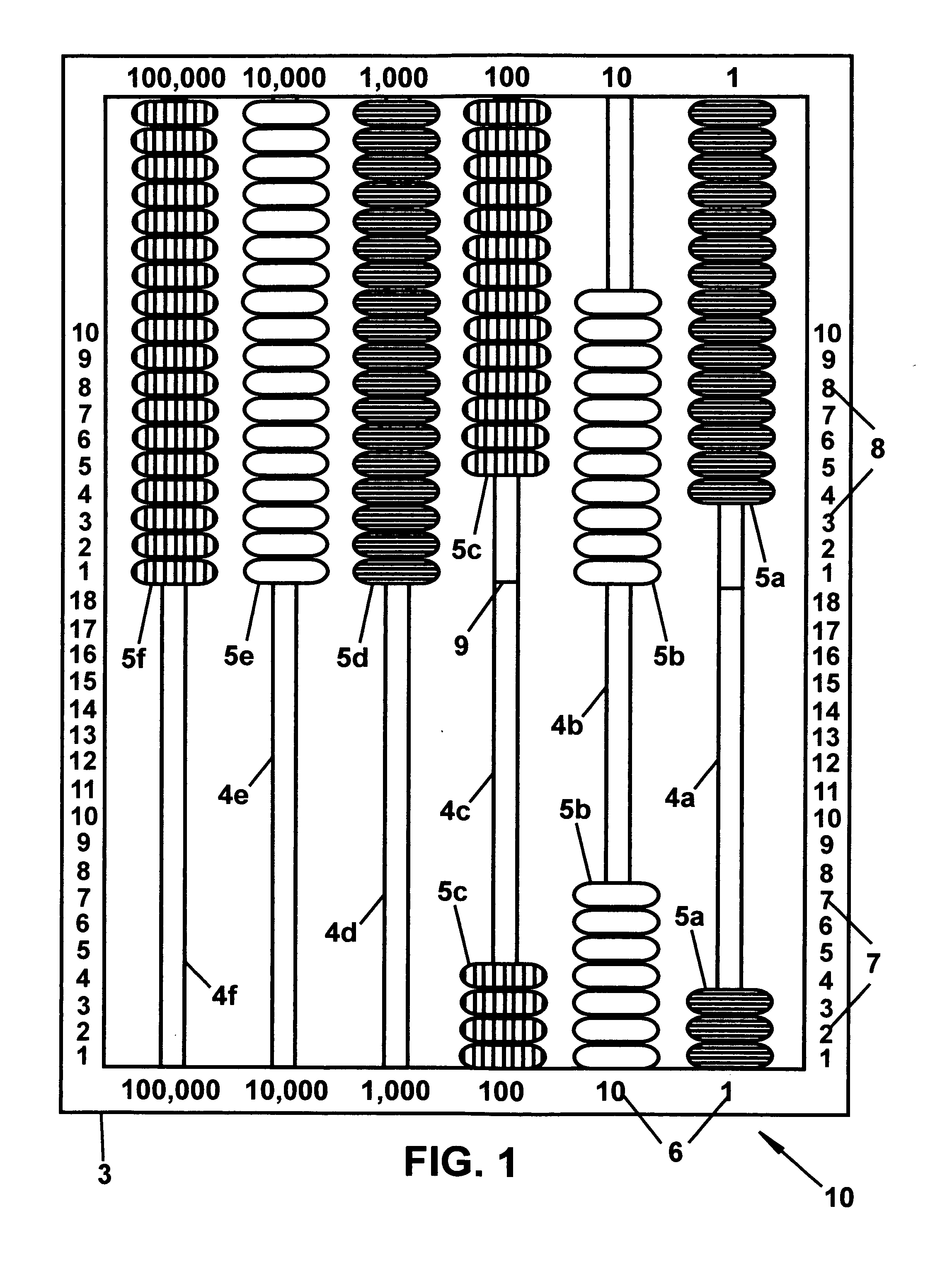Abacus
a technology of abacus and abacus, applied in the field of abacus, can solve the problems of requiring many time-consuming, repetitive, boring manipulations, and tens, if not hundreds of separate pieces or parts to perform regrouping, and achieve the effect of quick and easy regrouping
- Summary
- Abstract
- Description
- Claims
- Application Information
AI Technical Summary
Benefits of technology
Problems solved by technology
Method used
Image
Examples
Embodiment Construction
[0019] In the embodiment of the invention shown in FIG. 1, the abacus 10 comprises a frame 3 that holds six bars or columns or rods 4a-4f. Each of the bars 4a-4f is immobilized in the frame 3 by being sunk into depressions or holes (not shown) in the frame 3. Alternatively, each of the bars 4a-4f can be attached to the frame 3 by nails, screws, welds, glue, or any other means for attaching one object to another.
[0020] On each of bars 4a-4f is mounted or positioned a group comprising at least 18 independently, axially slideable beads 5a-5f, respectively. The reason that each group comprises at least 18 beads 5a-5f is because, in a based 10 numbering system, 9 is the maximum number that can be present at any place value position. Accordingly, when two numbers having the number 9 at the same place value position (e.g., 394 plus 194) are added, the sum obtained for that place value position is 18. Since 18=8+10, 8 will occupy the place value position of the numbers being added and the ...
PUM
 Login to View More
Login to View More Abstract
Description
Claims
Application Information
 Login to View More
Login to View More - R&D
- Intellectual Property
- Life Sciences
- Materials
- Tech Scout
- Unparalleled Data Quality
- Higher Quality Content
- 60% Fewer Hallucinations
Browse by: Latest US Patents, China's latest patents, Technical Efficacy Thesaurus, Application Domain, Technology Topic, Popular Technical Reports.
© 2025 PatSnap. All rights reserved.Legal|Privacy policy|Modern Slavery Act Transparency Statement|Sitemap|About US| Contact US: help@patsnap.com



